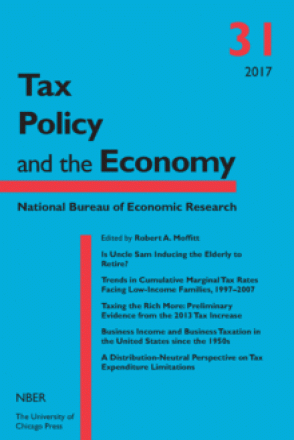Is Uncle Sam Inducing the Elderly to Retire?

You may be able to download this chapter for free via the Document Object Identifier.
Many if not most Baby Boomers appear at risk of suffering a major decline in their living standard in retirement. With federal and state government finances far too encumbered to significantly raise Social Security, Medicare, and Medicaid benefits, Boomers must look to their own devices to rescue their retirements, namely working harder and longer. However, the incentive of Boomers to earn more is significantly limited by a plethora of explicit federal and state taxes and implicit taxes arising from the loss of federal and state benefits as one earns more. Of particular concern is Medicaid and Social Security’s complex Earnings Test and clawback of disability benefits. This study measures the work disincentives confronting those age 50 to 79 from the entire array of explicit and implicit fiscal work disincentives. Specifically, the paper runs older respondents in the Federal Reserve’s 2013 Survey of Consumer Finances through The Fiscal Analyzer—a software tool designed, in part, to calculate remaining lifetime marginal net tax rates.
We find that working longer, say an extra five years, can raise older workers’ sustainable living standards. But the impact is far smaller than suggested in the literature in large part because of high net taxation of labor earnings. We also find that many Baby Boomers now face or will face high and, in very many cases, extremely high work disincentives arising from the hodgepodge design of our fiscal system. A third finding is that the marginal net tax rate associated with a significant increase in earnings, say $20,000 per year, arising from taking a full-time or part-time job (which could a second job), can, for many elderly, be dramatically higher than that associated with earning a relatively small, say $1,000 per year, extra amount of money. This is due to the various income thresholds in our fiscal system. We also examine the elimination of all transfer program asset and income testing. This dramatically lowers marginal net tax rates facing the poor. Another key finding is the enormous dispersion in effective marginal remaining lifetime net tax rates facing seeming identical households, i.e., households with the same age and resource level. Finally, we find that traditional, current-year (i.e., static) marginal tax calculations relating this year’s extra taxes to this year’s extra income are woefully off target when it comes to properly measuring the elderly’s disincentives to work.
Our findings suggest that Uncle Sam is, indeed, inducing the elderly to retire.


